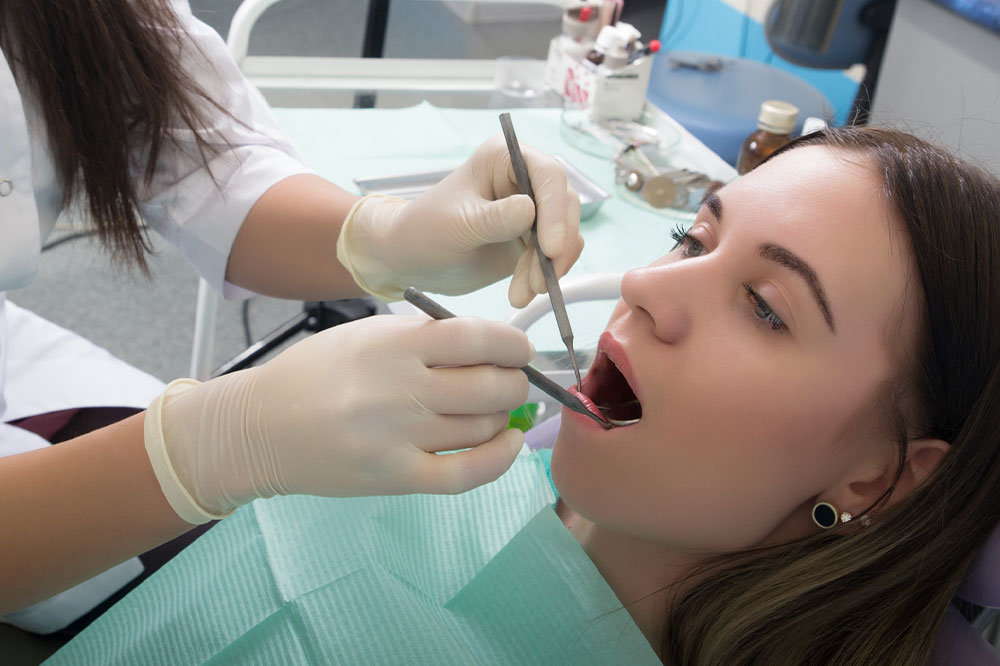
Tooth abscess – Types, causes, symptoms, and management
A tooth abscess is a pus pocket formed as a result of a bacterial infection in the gum. It mainly affects oral tissues surrounding the affected tooth and can spread to the rest of the mouth and body. In some cases, tooth abscesses may cause secondary illnesses also. An abscessed tooth will not heal naturally and needs dental treatment. Tooth abscess appears as a swollen, red bump, pimple, or boil.
Tooth abscess
Three common types of tooth abscesses are generally observed. They are:
Periapical abscess
This abscess is visible near the tip of a tooth’s root.
Periodontal abscess
A periodontal abscess is an infection in the gum next to the root of a tooth and can spread to the surrounding bone and tissue.
Gingival abscess
A gingival abscess is a type of infection that affects the gums.
Causes
An infection caused by bacteria in the plaque that forms in the gums or teeth is the primary reason for a dental abscess. In most cases, it is a complicated form of dental infection. Some of the causes of this bacterial invasion are:
Broken, cracked, or chipped teeth
If there is a fractured or broken tooth, bacteria can enter the tooth and pulp, developing pulpitis. They then reach the alveolar bone, the supporting bone around the tooth, and form an abscess.
Gum disease
It is an inflammation of the tissues surrounding the teeth. If left untreated, the infection can worsen and cause the gums to become infected with bacteria, leading to periodontitis. More common in adults, this condition causes the separation of the root tissue from the base of the tooth, forming a periodontal pocket. A periodontal abscess is formed when bacteria build up in this pocket.
Cavities
A cavity is created when the hard material of the tooth gets destroyed, forming a hollow space. This happens when food particles trapped in the tooth get broken down by bacteria. The acid produced as a result damages the enamel.
Tooth injury
An injury causes the inner pulp to get damaged, making it susceptible to infection.
Some conditions and habits that make people more susceptible to an abscessed tooth include:
Having xerostomia (a dry mouth)
Bacteria survive and multiply in a low saliva environment.
Poor oral hygiene
Improper or irregular brushing and dental cleaning can lead to bacterial growth.
A weakened immune system
When the immune system is weakened, the body becomes vulnerable to bacterial infections because it cannot effectively combat harmful microorganisms.
Symptoms
The most common symptom of a tooth abscess is throbbing pain near the tooth or gums. This pain can be described as gnawing, sharp, shooting, continuous, or only when chewing. Additionally, the pain may radiate to one’s neck, jawbone, or ear. The pain generally develops suddenly, only to worsen with time. Other symptoms include:
Sensitivity to hot or cold temperatures in the teeth
Bitter taste in the mouth
Halitosis (bad breath)
Gum redness and swelling
Loosening of the affected tooth
Swelling in the upper or lower jaw
Pain, which worsens when lying down
Facial redness and swelling
Discolored teeth
Lymph nodes, tender or swollen, in the neck or under the jaw
Fever
A general sense of being ill
Insomnia
Difficulties opening the mouth
Swallowing difficulties
Treatment
When treating a tooth abscess, the main aim is to avoid complications and eliminate the infection. Some treatment options include incision and drainage, root canal, and tooth extraction.




